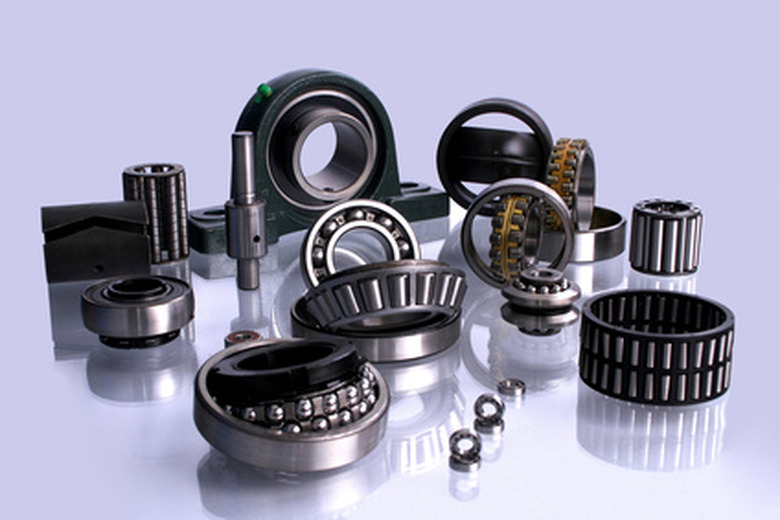How To Calculate Friction In A Sleeve Bearing
The friction present in a sleeve bearing depends upon several factors. For example, the constant value of the coefficient of friction depends upon what materials comprise the sleeve and bearing. Other important factors include the size of the shafts, the rotational speed and the lubricant viscosity. In a rolling-element bearing, its static friction (and the torque needed to overcome that force) usually exceeds its running friction. Consider all these factors to calculate friction in a given sleeve bearing.
Step 1
Determine the materials of which the inner bearing and outer sleeve are composed. Refer to tables of standard coefficients of friction to determine a rough value for the coefficient of friction between those two materials in particular. Note this dimensionless constant using the greek letter "mu" (µ).
Step 2
Determine the sizes of the bearing and of the sleeve. Note the radius of the shaft using the letter "R."
Step 3
Subtract the area of the bearing shaft from the area of the sleeve to calculate the radial clearance between them. Note this clearance, using the same units as for R, but use the letter "c."
Step 4
Determine the viscosity of the lubricant in the bearing. Note the force per area multiplied by time with the letter "P."
Step 5
Determine the speed at which the bearing revolves in the shaft. Note the revolutions per second with the letter "n."
Step 6
Multiply 2 by pi squared (π^2) by µ (the coefficient of friction) by n (the speed of revolution) by R (the radius of the shaft).
Step 7
Multiply P (the viscosity of the lubricant) by c (the radial clearance between shaft and sleeve).
Step 8
Finally, divide the value calculated in Step 6 by the value calculated in Step 7 to complete Petroff's equation. The result is the force of the friction present in the sleeve bearing.
TL;DR (Too Long; Didn't Read)
Friction = (2 * π^2) * (µ * c * R) / (P * c)
π (pi) has no dimensions or units. µ (coefficient of friction) has no dimensions or units, and varies depending on the materials in question. Often, assuming a range of values here proves more useful than pinpointing one. c (radial clearance) uses units of area, such as meters squared. n (speed) uses units of movement / time, such as revolutions per second. R (shaft radius) uses units of space, such as meters. P (viscosity) uses units of force / area * time, such as kilogram-meters / meters squared * seconds.
Cite This Article
MLA
Levenberg, Lewis. "How To Calculate Friction In A Sleeve Bearing" sciencing.com, https://www.sciencing.com/calculate-friction-sleeve-bearing-7802059/. 24 April 2017.
APA
Levenberg, Lewis. (2017, April 24). How To Calculate Friction In A Sleeve Bearing. sciencing.com. Retrieved from https://www.sciencing.com/calculate-friction-sleeve-bearing-7802059/
Chicago
Levenberg, Lewis. How To Calculate Friction In A Sleeve Bearing last modified March 24, 2022. https://www.sciencing.com/calculate-friction-sleeve-bearing-7802059/
